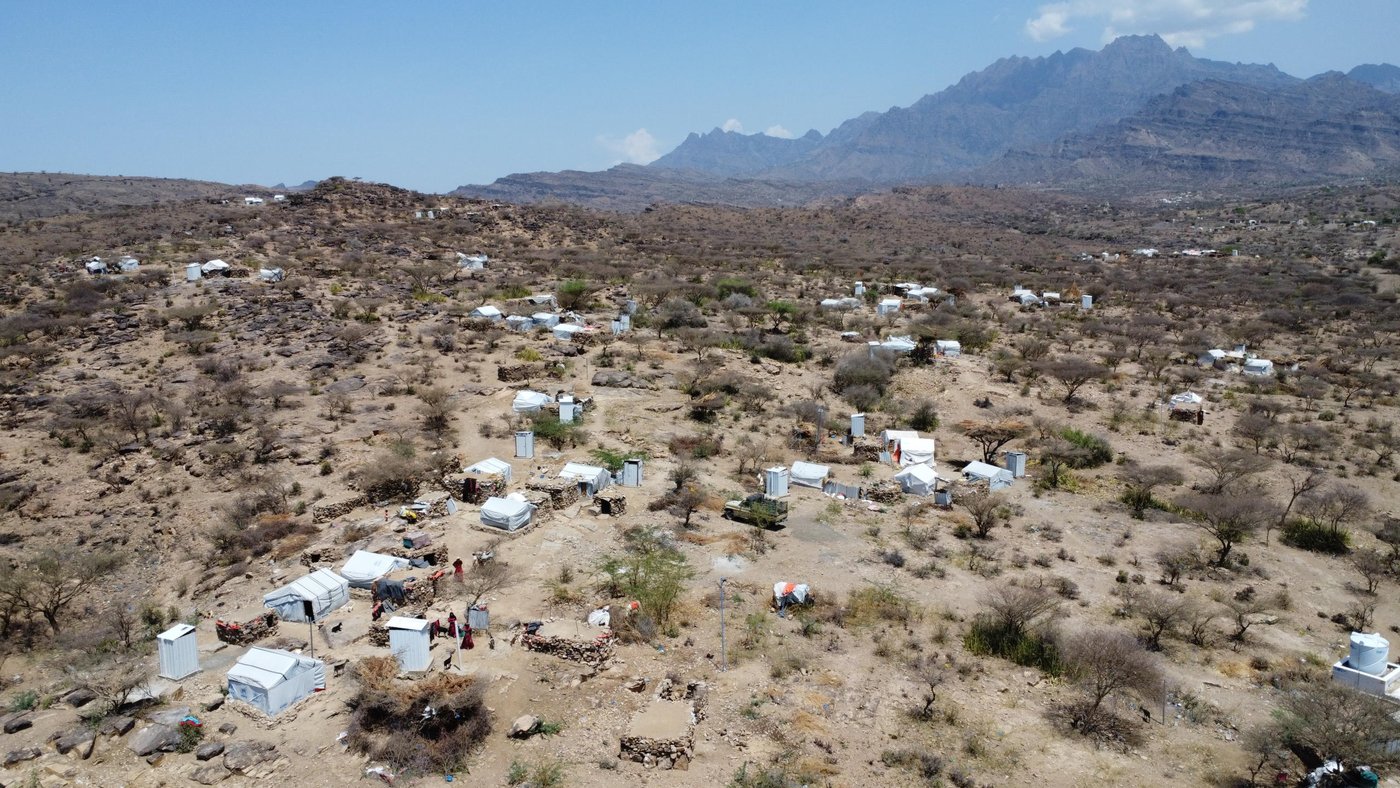1. One of the world’s largest humanitarian crises for nearly a decade
While Yemen is too often off the world's radar, it has consistently been one of the largest humanitarian crises in the world. Over half of its population requires humanitarian assistance. Conflict, extensive use of explosive weapons, and years of blockade have decimated civilian infrastructure and the local economy. They have led to extreme poverty, alarming levels of hunger, and widespread displacement.
2. Funding cuts exacerbate humanitarian suffering
The aid committed to Yemen has shrunk over the last year, depriving millions of vital assistance and pushing the country closer to a humanitarian catastrophe. The gap between the funding needed and the funding actually committed by donor countries has never been wider.
2024 is picking up where 2023 left off, with less than 10 per cent of Yemen’s aid needs covered so far. Action is urgently required to spare people more suffering.
3. Half of Yemen faces severe hunger
There are currently 17.6 million people – half of the population of Yemen – at risk of severe hunger. This includes 5 million malnourished children and 2.7 million pregnant and breastfeeding mothers.
With fewer resources available for humanitarian aid in Yemen, 2024 may be one of the most dangerous years yet for hunger. Gaps in food assistance programming has meant Yemenis have less to eat, forcing many to sell their furniture, or borrow or share food.
4. Millions still live in displacement
Across Yemen, 4.5 million people have been displaced by conflict. This is 14 per cent of the population. Of these, 80 per cent are women and children. Many have been displaced more than once.
The displacement has continued amidst an aggravating economic crisis. Where there have been lulls in the fighting and chances for people to try and return home, there has been almost no support for the communities concerned. NRC has found that people who do try to move do so not out of choice, but because conditions are so severe in the places where they are living. Most tell us they failed to return home safely. The Yemeni people deserve long-term solutions which include safety, livelihoods and basic services.

5. Children remain cut off from education
Years of conflict and the destruction of homes, schools and communities mean that more than 4.5 million school-aged Yemeni children are now out of school. It’s not just destroyed schools that are preventing a return to the classroom – families also report being unable to afford tuition or transport fees. Some children are having to work instead of studying.
6. Economic collapse threatens daily life
Economic degradation means that the needs in Yemen keep growing year after year. The prolonged conflict has led to many people losing their livelihoods. Everyday basics and essential services such as hospitals, schools, water systems and even homes are largely destroyed. This makes every part of survival more expensive.
High inflation rates make everything more difficult to afford for people who have no way to earn an income. This means that needs are rising as the cost of living becomes higher.
7. Fragile truce hangs in the balance
It's been almost two years since a six-month truce was announced between parties to the conflict in Yemen – an unprecedented opportunity for peace. While the UN-brokered truce was not renewed, there has been a fragile continuation of truce-like conditions. As a result, levels of violence have dropped and there is more room for political negotiations.
Yet the issues leading to protracted displacement and economic decline have still not been fully addressed. The Yemeni people are still in limbo, unable to move on from the impact of this devastating conflict.
8. Climate change adds to struggle
Yemen is being hit hard by the climate crisis. Since the conflict began, 600,000 people have been displaced not only by fighting, but by environmental disasters such as flooding and storms. Changes in rainfall patterns harm agriculture and access to food and water in one of the world’s most water-scarce countries.
Yemen ranks among the most vulnerable countries to climate change and is one of the least prepared for climate shocks. This means that when environmental disasters hit, such as September 2023’s flash flooding, there is little support for the half a million people who were displaced as a result. The longer the conflict drags on, the less time there is to help Yemen prepare for the massive long-term environmental challenges it faces.
9. Resilience and response from local communities still going strong
Yemen has a rich history of civil society organisations with strong connections to local communities and a deep understanding of the complex challenges and needs that these communities face. Local civil society actors in Yemen are the foundation of the humanitarian response and have been key to the restoration of essential services since the start of the current conflict.
Local civil society – including several women-led organisations – is playing an important part in facilitating dialogue and spearheading community-level mediation. Yemeni civil society is also best placed to work on mediating the increased conflict around land, water and other resources. It is Yemeni organisations who have the expertise to drive longer-term solutions to the challenges facing the country.
Read more about our work in Yemen.
Sign up to our newsletter to read more stories from around the world.


